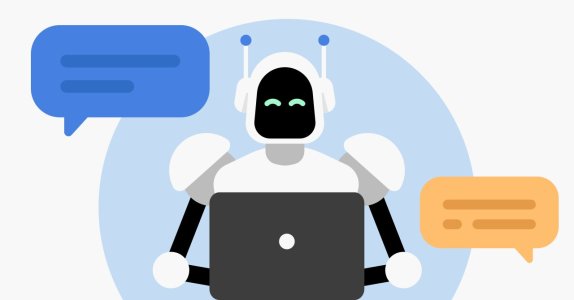Introduction to Chatbots
Chatbots are AI-powered programs that simulate human conversation through text or voice interactions. They have become an integral part of customer service, marketing, and information dissemination across various industries. By utilizing natural language processing (NLP) and machine learning, chatbots can understand user queries, provide relevant responses, and even learn from interactions to improve their performance over time. Their ability to operate 24/7 allows for continuous customer engagement without human intervention, significantly reducing operational costs. As technology advances, chatbots are becoming more sophisticated, capable of handling complex tasks such as booking appointments, troubleshooting issues, and delivering personalized recommendations. Their growing prevalence signifies a shift toward more automated and efficient digital communication channels.
Types of Chatbots and Their Functions
There are primarily two types of chatbots: rule-based and AI-powered. Rule-based chatbots operate on predefined scripts and are suitable for simple, repetitive tasks like FAQ responses. They follow decision trees to guide conversations but lack the flexibility to handle unexpected queries. AI-powered chatbots, on the other hand, use advanced NLP and machine learning to understand context, interpret nuances, and generate more natural responses. These chatbots can handle complex interactions, personalize user experiences, and adapt based on previous interactions. Some specialized chatbots include virtual assistants like Siri or Alexa, which perform a wide range of tasks beyond messaging. Choosing the right type depends on the business needs, complexity of tasks, and desired user engagement level.
Advantages of Implementing Chatbots
Implementing chatbots offers numerous benefits for businesses and users alike. They enhance customer experience by providing instant responses, reducing wait times, and offering 24/7 support. This immediate assistance can lead to increased customer satisfaction and loyalty. Cost savings are significant, as chatbots can handle high volumes of inquiries without additional staff. They also enable data collection and analytics, helping businesses understand customer preferences, behaviors, and pain points for targeted marketing. Furthermore, chatbots streamline operations by automating routine tasks, freeing up human agents for more complex issues. As a result, organizations can improve efficiency, reduce errors, and scale their customer service capabilities without proportional increases in resources.
Challenges and Future of Chatbots
Despite their advantages, chatbots face challenges such as understanding complex language, managing nuanced conversations, and ensuring data privacy. Misinterpretation of user intent can lead to frustration and poor user experience. Additionally, designing chatbots that can handle diverse queries requires significant development effort and ongoing maintenance. Privacy concerns also arise around data security and consent, necessitating strict compliance with regulations. Looking ahead, advancements in AI and NLP promise more human-like interactions, emotional intelligence, and better contextual understanding. Chatbots' future involves integrating with other emerging technologies like IoT and augmented reality, creating more immersive and personalized experiences. As technology evolves, chatbots will become even more essential in shaping efficient, accessible, and intelligent digital communication ecosystems.
Chatbots are AI-powered programs that simulate human conversation through text or voice interactions. They have become an integral part of customer service, marketing, and information dissemination across various industries. By utilizing natural language processing (NLP) and machine learning, chatbots can understand user queries, provide relevant responses, and even learn from interactions to improve their performance over time. Their ability to operate 24/7 allows for continuous customer engagement without human intervention, significantly reducing operational costs. As technology advances, chatbots are becoming more sophisticated, capable of handling complex tasks such as booking appointments, troubleshooting issues, and delivering personalized recommendations. Their growing prevalence signifies a shift toward more automated and efficient digital communication channels.
Types of Chatbots and Their Functions
There are primarily two types of chatbots: rule-based and AI-powered. Rule-based chatbots operate on predefined scripts and are suitable for simple, repetitive tasks like FAQ responses. They follow decision trees to guide conversations but lack the flexibility to handle unexpected queries. AI-powered chatbots, on the other hand, use advanced NLP and machine learning to understand context, interpret nuances, and generate more natural responses. These chatbots can handle complex interactions, personalize user experiences, and adapt based on previous interactions. Some specialized chatbots include virtual assistants like Siri or Alexa, which perform a wide range of tasks beyond messaging. Choosing the right type depends on the business needs, complexity of tasks, and desired user engagement level.
Advantages of Implementing Chatbots
Implementing chatbots offers numerous benefits for businesses and users alike. They enhance customer experience by providing instant responses, reducing wait times, and offering 24/7 support. This immediate assistance can lead to increased customer satisfaction and loyalty. Cost savings are significant, as chatbots can handle high volumes of inquiries without additional staff. They also enable data collection and analytics, helping businesses understand customer preferences, behaviors, and pain points for targeted marketing. Furthermore, chatbots streamline operations by automating routine tasks, freeing up human agents for more complex issues. As a result, organizations can improve efficiency, reduce errors, and scale their customer service capabilities without proportional increases in resources.
Challenges and Future of Chatbots
Despite their advantages, chatbots face challenges such as understanding complex language, managing nuanced conversations, and ensuring data privacy. Misinterpretation of user intent can lead to frustration and poor user experience. Additionally, designing chatbots that can handle diverse queries requires significant development effort and ongoing maintenance. Privacy concerns also arise around data security and consent, necessitating strict compliance with regulations. Looking ahead, advancements in AI and NLP promise more human-like interactions, emotional intelligence, and better contextual understanding. Chatbots' future involves integrating with other emerging technologies like IoT and augmented reality, creating more immersive and personalized experiences. As technology evolves, chatbots will become even more essential in shaping efficient, accessible, and intelligent digital communication ecosystems.
